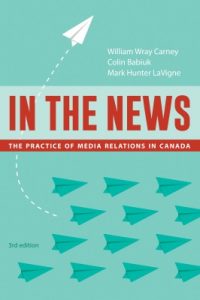On March 22, 2013 hours before that year’s budget was tabled in Parliament, two newspapers reported the Department of Finance was about to cut tariffs on hockey equipment. “Cheaper Hockey Gear An Assist To Parents”, read the Globe & Mail headline. “This Year’s Shiny Object: Cheaper Hockey Gear”, read the National Post.
Readers could only conclude both newspapers in a simultaneous burst of enterprise reporting had uncovered a budget secret through fearless digging. In fact, both were fed the line by department staff. This was not news-gathering; it was propaganda.
The dailies did not mention cabinet attempted to raise tariffs on hockey equipment three months before the budget, and Bauer Hockey Corp. replied with a confidential letter threatening to move all production out of Canada. Blacklock’s had that story all to itself.
Here in a nutshell was the cynical interplay between officialdom and media. Both insist they have a “relationship”, like organ grinder and monkey, though neither can agree on who is which.
With public distrust of government and media at an ever-ascending high, the University of Alberta Press has the timely release of the third edition of In The News: The Practice Of Media Relations In Canada. The book is co-written by communications professionals, for communications professionals, but it’s instructive for any member of the audience coveted by officialdom and press: the general public, you.
“Media relations is the art and science of reaching your target audience with key messages through the news media,” authors explain. “Media relations is one of public relations’ main practice areas and, arguably, one of the most difficult. It is one of the only communications disciplines that goes through a gatekeeper – news media – to reach the end audience.”
In The News is entertaining and refreshingly frank. “Reporters are not inherently blessed with brains, civility or ethics,” write authors. “Neither are communicators. Both can be wrong-headed, uncivil or simply obtuse.”
Authors recommend that clients avoid news conferences (“the pack might tear you or your spokesperson to pieces”); try not to be clever (“spin can blow back on its practitioners”); prepare for surprises (“you cannot manage the media”); and understand that journalism is a completely unregulated trade, meaning literally anyone can join. True fact: Cement truck drivers are subject to more regulatory oversight than reporters.
“Given that neither journalism nor communications is likely to become regulated, they must police themselves,” write authors: “Today’s media consider themselves objective and non-partisan – a far cry from media coverage in the nineteenth and early twentieth century, when political parties owned newspapers and provide the party line to loyal readers. Like others who deal frequently with media, politicians see the media’s mistakes and shortcomings more than most people do; this knowledge adds to their skepticism about dealing with reporters.”
By Holly Doan
In The News: The Practice of Media Relations in Canada, 3rd Edition, by William Wray Carney, Colin Babiuk and Mark Hunter LaVigne; University of Alberta Press; 320 pages; ISBN 9781-7721-24118; $39.99






